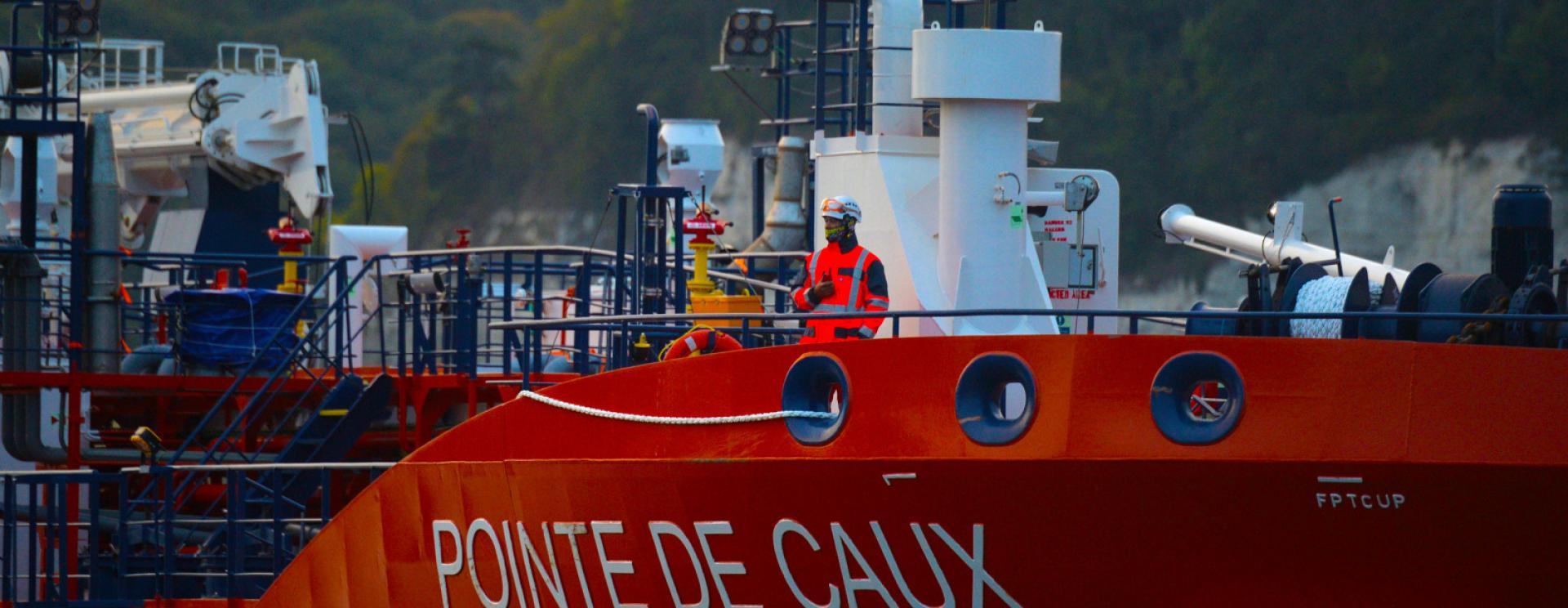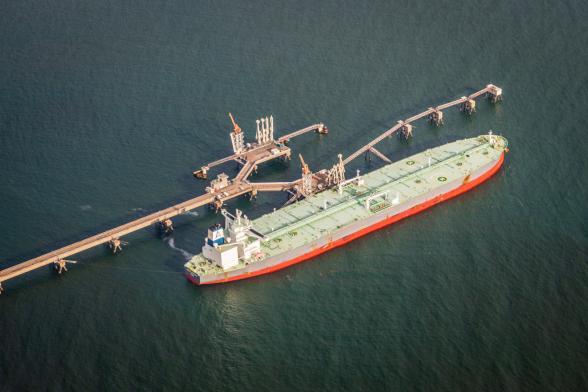- ABOUT US
- CARGO
- A multi-sector focus
- A maritime service offering in the first rank
- An attractive multimodal offering
- An expanded short sea service offering
- Port terminals and shared-use quays
- High-quality ship services
- Fluid, facilitated goods throughput
- A port that puts its performance figures in the public domain
- PASSENGERS
- MULTIMODALITY
- ECOLOGICAL TRANSITION
- INNOVATION

Liquid bulk terminals
Published on - Updated
Key figures
- Over 40Mt (2022),
- 6.6m cu. m. storage,
- 45% of France’s refining capacity,
- 80 % of France’s production of additives and oils,
- 50 % of France’s production of plastics and elastomers,
- The leading European producer of fertilisers.
The construction industry is present on the terminals of most of the other ports in the Paris regional network, urban ports and multimodal platforms.
Terminals in Le Havre
- Le Havre, ranks in second place among French ports for liquid bulk traffic.
- Antifer, an XXL oil port: 18m draught, with direct access for VLCCs up to 250,000 deadweight tonnes (at high tide).
- Round-the-clock ship reception.
- Chemical wharves in a constant-level basin, 13.8m draught.
- Chemicals: aromatics, butadiene, olefins, additives, fluids, solvents, biofuels, industrial alcohols, sulphur, commodities, naphtha, etc.
- le of storing all categories of traffic.
Antifer oil terminal (CIM-CCMP)
- Direct access for tankers up to 550,000 tonnes, draught 35m,
- 20% of France’s crude oil imports,
- 25,000 cu. m. per hour,
- Storage capacity: 640,000 cu. m., comprising four 150,000 cu. m. tanks for crude oil and two 20,000 cu. m. service tanks connected by 26km of pipeline to CIM's oil facilities in Le Havre (TRAPIL and CEPS networks) .
Rouen and Port-Jérôme terminals
- France’s third-ranking port for liquid bulk.
- Draught 10.5m on a rising tide and 11m on the fall.
Refining and petrochemical terminal
- 6 berths,
- Ships up to 50kt,
- Sectors: refined products, chemicals, olefins.
Agrifood terminal
- 1 berth,
- Ships up to 8kt,
- Sector: biofuels.
Terminals in the Paris area
- Gennevilliers: Lower Seine pipeline arrival point and junction with the networks ringing Paris (TRAPIL network); oil depots at the port.
- Limay: the leading river/seaport in the Paris region; a multi-bulk platform capab
